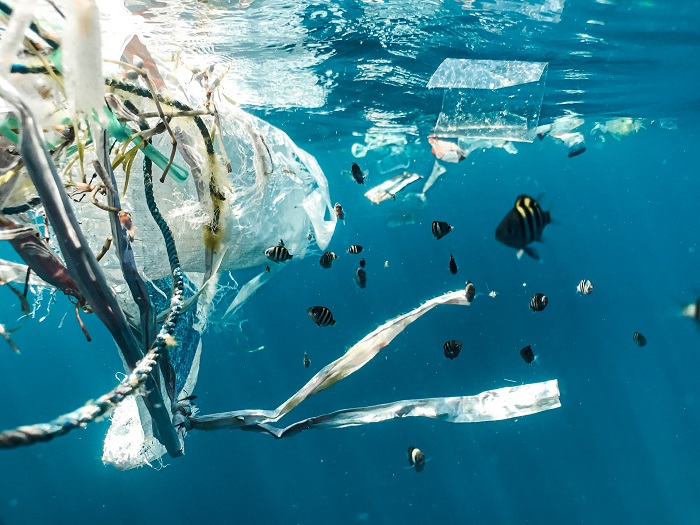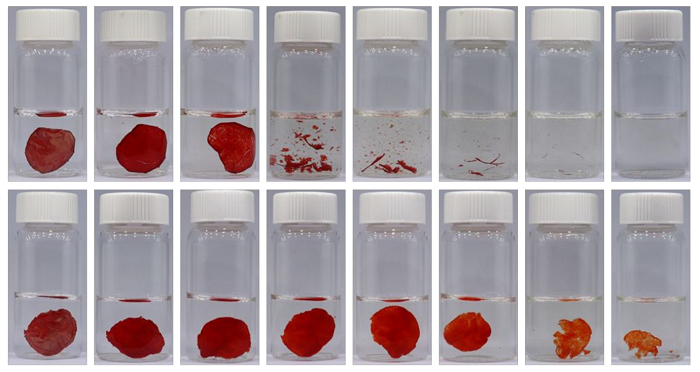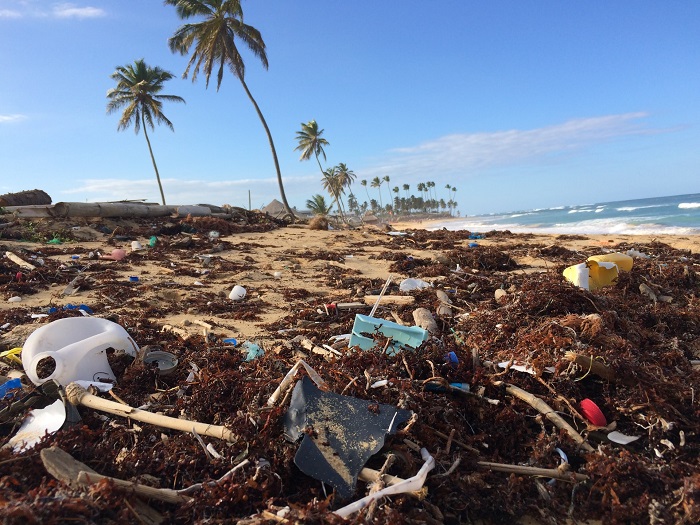ISABEL RUBIO ARROYO | Tungsteno
From straws, cutlery and packaging to clothing, household appliances and smartphones, on a planet overrun by plastic the slow decomposition of this material poses a major ecological challenge. A plastic bag can take more than 20 years to break down; a straw, more than 200; and a bottle, about 450 years. Finding more sustainable plastics that don’t pollute the planet is one of the great challenges of the 21st century, hence the international impact of the discovery by a team of Chinese scientists—they have created a plastic that degrades in just one week thanks to the sun and air. But to what extent can this new material put an end to this major environmental problem?
A plastic that degrades in record time
The research has been published in the Journal of the American Chemical Society (JACS) and reported in prestigious journals such as PNAS. This polymer is able to break down in such a short time because sun exposure changes its molecular composition. The process occurs by photo-oxidative degradation: the irradiation from sunlight breaks the double and triple bonded carbon structure of the polymer. During this reaction, succinic acid is formed, a naturally occurring small molecule that is non-toxic and does not leave microplastic fragments in the environment.
Making materials capable of degrading rapidly is crucial for safeguarding the environment. It is estimated that there are in excess of five trillion pieces of plastic floating near the surface of the world’s oceans, which collectively weigh a total of some 268,940 tonnes, equivalent to 27 Eiffel Towers, although this represents just 1% of all the plastic in our seas. 94% of the plastic that enters the ocean eventually ends up on the sea floor and another 5% washes up on our beaches. Of all the plastics discharged into the sea, 80% come from land-based sources, according to the report Plastics in the Marine Environment by the consultancy firm Eunomia. Before degrading, all these plastics can harm marine wildlife. Every year more than one million birds and 100,000 marine mammals die as a result of all the plastics that find their way into the oceans, according to Greenpeace.

There are more than five trillion pieces of plastic floating in the oceans that will take decades to hundreds of years to break down. Credit: Unsplash.
A flexible material potentially useful in the electronics sector
While the findings of this team of Chinese scientists sounds promising, this type of plastic is still being researched. Liang Luo, co-author of the study and an organic materials scientist at Huazhong University of Science and Technology in Wuhan, China, estimates that it could take five to 10 years before it can be made commercially available. Moreover, the polymer would not be useful in all sectors. Luo does not consider it a suitable material for plastic bottles or bags that need to last more than a week in the shops.
Instead, this flexible and degradable material could be used in the field of electronics, for example to make smartphones and other flexible electronic devices. In these instances, because it would not come into contact with light or oxygen, the material could last for years and then "make smartphones easier to dispose of at the end of their service life." The resulting succinic acid could also be recycled for use in the pharmaceutical and food industries, according to the expert.
Materials chemist Zhibin Guan, from the University of California, sees this research as "an exciting example of degradable conjugated polymers." While acknowledging that this plastic could be useful in the electronics sector, he cautions that "it will take more work to demonstrate the generality of this mechanism." For polymer chemist Eugene Chen at Colorado State University, this is an example of a "near-ideal plastic degradation." He is convinced that using sunlight and oxygen to break down plastic rather than focusing on microbial activity is a breakthrough for the field.

A team of scientists has created a plastic that degrades in just one week thanks to the sun and air. Credit: Journal of the American Chemical Society.
The ecological footprint of some biodegradable plastics
A variety of companies and researchers around the world are trying to create plastics capable of decomposing under certain conditions, such as temperature and humidity, and over different lengths of time. In Spain, a project led by the Spanish National Research Council (CSIC) has succeeded in making a biodegradable packaging from cheese whey and microcellulose from almond shells. In theory, this material can extend the shelf life of meat, fish or vegetables and biodegrade within a maximum of 90 days of disposal.
Another team of researchers, from Yale University, has created a biodegradable plastic from wood dust that entirely degrades in three months. In this case, it could be used to create bags and packaging, or even products for use in the construction and automotive sectors. Despite all these promising initiatives, there is still a long way to go. The European Environment Agency indicates that currently only about 1% of plastics and plastic products on the global market are considered bio-based, compostable and/or biodegradable.
In addition, plastics that some companies define as biodegradable also have their own ecological footprint. "Most plastics continue to be made from fossil fuels in a process that contributes to increased greenhouse gas emissions along their value chain," the agency says. In fact, many plastics pollute throughout their entire life cycle, from production to use and, finally, through their disposal.
Many of the polymers we use in everyday life will remain in landfills, the sea and even the atmosphere for dozens of years. A study published in Science Advances warns that only around 9% of all plastic produced worldwide has been recycled. Given the inability to give a second life to this material, which is often disposable, creating biodegradable and environmentally-friendly alternatives is an urgent challenge.
· — —
Tungsteno is a journalism laboratory to scan the essence of innovation. Devised by Materia Publicaciones Científicas for Sacyr’s blog.
